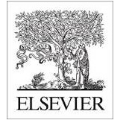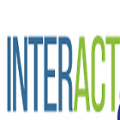Virtual reality (VR) and interactive 3D visualization systems have enhanced educational experiences and environments, particularly in complicated subjects such as anatomy education. VR-based systems surpass the potential limitations of traditional training approaches in facilitating interactive engagement among students. However, research on embodied virtual assistants that leverage generative artificial intelligence (AI) and verbal communication in the anatomy education context is underrepresented. In this work, we introduce a VR environment with a generative AI-embodied virtual assistant to support participants in responding to varying cognitive complexity anatomy questions and enable verbal communication. We assessed the technical efficacy and usability of the proposed environment in a pilot user study with 16 participants. We conducted a within-subject design for virtual assistant configuration (avatar- and screen-based), with two levels of cognitive complexity (knowledge- and analysis-based). The results reveal a significant difference in the scores obtained from knowledge- and analysis-based questions in relation to avatar configuration. Moreover, results provide insights into usability, cognitive task load, and the sense of presence in the proposed virtual assistant configurations. Our environment and results of the pilot study offer potential benefits and future research directions beyond medical education, using generative AI and embodied virtual agents as customized virtual conversational assistants.
翻译:暂无翻译





